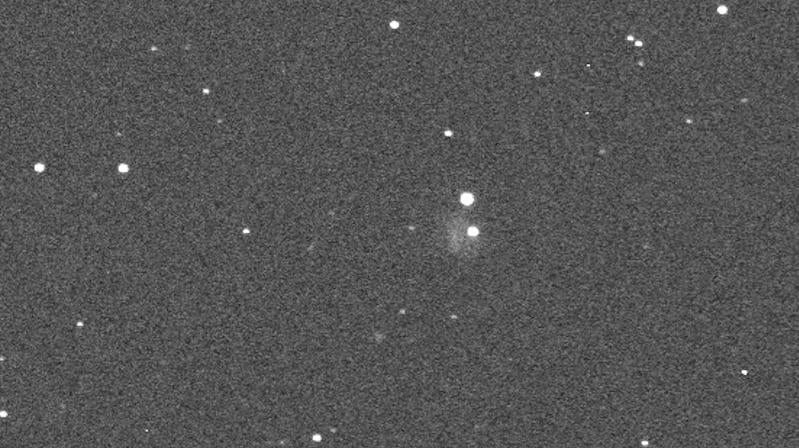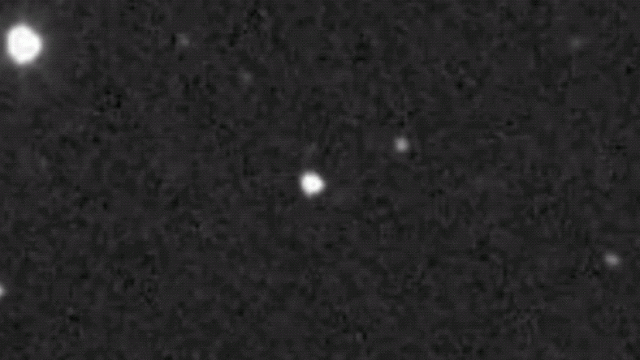NASA’s DART mission to ram a kinetic impactor into a harmless asteroid went perfectly yesterday, resulting in the desired destruction of the spacecraft. And as views from Earth showed, the effects of the impact weren’t subtle.
The 608 kg spacecraft plowed into Dimorphos, a small moon around asteroid Didymos, at 9:14 a.m. AEST on Tuesday, following a 10-month journey to the binary asteroid system. DART’s onboard DRACO camera captured stunning POV images as it sped toward the asteroid at speeds reaching 22,531 km per hour.
The DRACO images of the football stadium-size Dimorphos were sublime, revealing a craggy surface covered in boulders, rocks, and dust. DART was obliterated as a result of the impact, requiring other instruments to chronicle the aftermath. Scientists are now working to determine the degree to which DART affected the moonlet’s speed and triggered a potential change in its orbital trajectory around its larger host, Didymos. A meaningful result would suggest that scientists have stumbled upon a potential way to deflect hazardous asteroids. Dimorphos and Didymos don’t pose a threat to our planet, neither before nor after the DART experiment — this was merely a test to see if we can successfully move a space rock.

Telescopes around the world were focused on the binary asteroid system. Going into the experiment, it wasn’t clear how visible the impact might be from Earth, but the images we’re seeing from the ground clearly show a substantial plume emanating from Didymos.
“It is hard to comment on the stunning experience we had last night,” wrote the Virtual Telescope project in a blog post. “We saw in real-time, with our very own eyes, the effects of DART slamming into its target asteroid Didymos, making it much brighter, with a huge cloud of debris.” To track the impact, the Italy-based Virtual Telescope Project collaborated with the Klein Karoo Observatory in Calitzdorp, South Africa. “The target asteroid is visible on the bottom right of each image and clearly develops a dusty cloud, which expands quite quickly in [an eastern] direction, where the asteroid was moving, to,” according to the post. The astronomers estimate that dust cloud was expanding at a rate of 3 km per second.

Astronomers with the ATLAS project also chronicled the event. Short for Asteroid Terrestrial-impact Last Alert System, ATLAS is an asteroid impact early warning system based in Hawaii and funded by NASA. “ATLAS observations of the DART spacecraft at Didymos!” exclaimed ATLAS in a tweet. A sped-up timelapse shows a large plume produced by the impact and moving in the direction of the binary asteroid system.
ATLAS observations of the DART spacecraft impact at Didymos! pic.twitter.com/26IKwB9VSo
— ATLAS Project (@fallingstarIfA) September 27, 2022
The South African Astronomical Observatory, which manages an observatory in Sutherland, South Africa, captured a similar timelapse. Again, it shows a growing plume moving in the direction of the asteroid. It’s important to point out that, at a distance of over 11 million km, the binary pair appears as a single object.
Last night, Nicolas Erasmus (SAAO) and Amanda Sickafoose (@planetarysci) successfully observed DART’s impact with Dimorphos using the Mookodi instrument on the SAAO’s 1-m Lesedi telescope.@fallingstarIfA also did a very similar measurement using ATLAS-Sutherland.#DART #NASA pic.twitter.com/olr4gV5SOV
— SAAO (@SAAO) September 27, 2022
I’m struck by the size of the plume, but it’s difficult to tell if the impact kicked up a lot of material or if these views are a function of really bright dust. Views of Dimorphos’s surface looked very rubble pile-like, suggesting a loose conglomeration of materials. If that’s the case, Dimorphos may have done tremendous damage to the asteroid, but we need more data to be sure. At the very least, DART produced a substantial cloud of dust.
As to when we’ll know the degree to which Dimorphos’s orbital trajectory was altered, that could take anywhere from several days to several weeks. Regardless, it’ll be a fascinating result.
